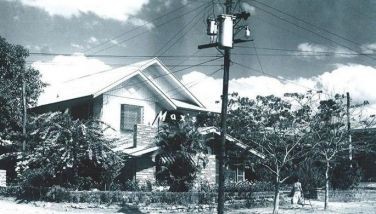The writings of Joaquin
On April 28, 2004, the greatest writer we have ever produced passed from the living to immortality. He was baptized Nicomedes Joaquin and given the name Onching; but he became known as Nick Joaquin. He has captured our Hispanic past as it was not captured even during the Spanish era. Sometimes he used the pen name Quijano de Manila. Quijano is an anagram of Joaquin but it was also the name of the Man from La Mancha before he took on the identity of Don Quixote. So his pen name stood for Don Quixote of Manila. And that is how he was known — our Quixote.
In his writing he immortalized little known practices — such as the Tadtarin of Paco in “The Summer Solstice”. The Tadtarin is a matriarchal cult celebrated in Paco for three days, beginning on the Feast of St. John. It is an echo of our pagan past, and demonstrates the unique combination of paganism and Christianity that is Philippine Catholicism (a theme he repeatedly touched upon). His stories are characterized by haunting scenes, no more than the candle-lit image of a girl standing before a mirror in a darkened room whispering into the night: “Who will my love be?”. This is found in the story “May Day Eve”. To know what she discovers, we recommend reading the story.
In his Mass of St. Sylvestre, the character Mateo del Maestro, who turns into stone for witnessing the Mass of St. Sylvestre, was obviously inspired by the stone image of the Frenchman Maitre Mathieu, who totally redesigned the Portico de la Gloria in the Spanish Cathedral of Santiago de Compostela. We have no classic Christmas story, but we do have a classic New Year’s story and that is Nick Joaquin’s Mass of St. Sylvestre. We have often wondered if we have a movie director great enough who could capture that story on film. It would be great to begin every New Year just watching such a film.
On April 1565, Don Miguel Lopez de Legazpi and Friar Andres de Urdaneta set foot in Cebu. In his book “Culture and History”, Nick Joaquin described that moment: “On an April day in 1565, Legazpi’s expedition arrived in Cebu. On seeing the Spanish ships, the natives burned their village and fled to the hills, fearing that the Spaniards had come to avenge Magellan’s death. But the natives did not put one house to the torch. In that house, the Spaniards were astonished to find an image of the Christ Child enthroned... the little statue Pigafetta had given to King Humabon’s wife.... When the soldiers brought him to the new found image, Urdaneta said, ‘Let us build a church to house the Child...”
Because of that moment of discovery, Nick Joaquin would poetically describe Christianity in the Philippines as “Urdaneta’s dynamo”. Last year, along with Don Antonio de Ynchausti, we chaired some celebrations in honor of Friar Urdaneta’s 500th birth anniversary. But well before these activities were planned, Nick Joaquin immortalized Friar Urdaneta in written word. We hope that Cebu is continuing activities to honor Friar Urdaneta and the discovery of the Santo Nino. As Joaquin wrote, “The Child didn’t simply come and abruptly cut us off from our past. It shared our past with us and served as the link between that past and our present, by becoming, from 1521 to 1565, the last and greatest of our pagan gods”. There is no more important cultural icon in the Philippines than the Santo Nino de Cebu.
Nick Joaquin’s play, “A Portrait of the Artist as Filipino,” ends with the La Naval de Manila procession in Intramuros. Now that procession is held outside Intramuros and it just is not the same at all. The truth is that old Intramuros no longer exists — except in the short stories and plays of Nick Joaquin. And that is his great contribution to Philippine literature.
He is undoubtedly the most gifted writer that we have ever produced. The best way to honor Nick Joaquin is to be familiar with his stories and to get other people, especially the young, to read them. We do not know of any other person who has regretted having read Nick Joaquin’s writings. You know yourself and your country better after you have read his short stories, plays and histories. Through his pen, the Philippines’ past lives.
- Latest
- Trending






















